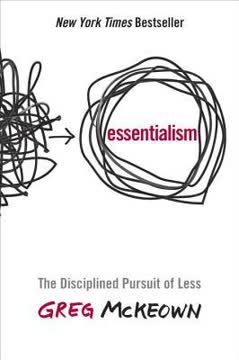ข้อสำคัญ
1. การสื่อสารอย่างไม่ใช้ความรุนแรง (NVC) คือการปฏิบัติทางจิตวิญญาณเพื่อการใช้ชีวิตด้วยความเมตตา
“นี่คือการปฏิบัติทางจิตวิญญาณที่ผมพยายามนำเสนอในฐานะวิถีชีวิต”
รากฐานของ NVC การสื่อสารอย่างไม่ใช้ความรุนแรงมีรากฐานมาจากจิตวิญญาณ มุ่งหวังให้ความรักและความเมตตาปรากฏในทุกการสื่อสารประจำวัน ไม่ใช่เพียงเทคนิคการสื่อสารเท่านั้น แต่ยังส่งเสริมให้ผู้ปฏิบัติเชื่อมโยงกับความศักดิ์สิทธิ์ภายในตนเองและผู้อื่น
การประยุกต์ใช้ในชีวิตจริง NVC ประกอบด้วย
- การแสดงออกอย่างซื่อสัตย์โดยไม่กล่าวโทษหรือตำหนิ
- การฟังด้วยความเข้าใจและเห็นอกเห็นใจความรู้สึกและความต้องการของผู้อื่น
- การขอร้องอย่างชัดเจนแทนการบังคับ
- การมุ่งเน้นความเข้าใจร่วมกันและการตอบสนองความต้องการอย่างแท้จริง
เมื่อฝึกฝน NVC ผู้คนมักพบว่าความสัมพันธ์และมุมมองต่อโลกเปลี่ยนแปลงไปในทางที่ลึกซึ้ง นำไปสู่ความสัมพันธ์ที่กลมกลืนและเติมเต็มมากขึ้นทั้งกับผู้อื่นและตัวเอง
2. ความโกรธคือสัญญาณของความต้องการที่ไม่ได้รับการตอบสนอง ไม่ใช่เหตุผลสำหรับการลงโทษ
“ความโกรธคือความรู้สึกธรรมชาติที่เกิดจากความคิดที่ผิดธรรมชาติ”
การมองความโกรธในมุมใหม่ NVC สอนให้เข้าใจว่าความโกรธไม่ใช่สิ่งเลวร้ายหรือทำลายล้างโดยธรรมชาติ แต่เป็นสัญญาณสำคัญที่บอกว่าความต้องการของเรายังไม่ได้รับการเติมเต็ม เมื่อเข้าใจเช่นนี้ เราจะเปลี่ยนจากการโทษผู้อื่นเป็นการระบุและตอบสนองความต้องการของตนเอง
ขั้นตอนจัดการความโกรธ
- ระบุสิ่งกระตุ้นโดยไม่ตัดสิน
- รับรู้ความคิดที่ก่อให้เกิดความโกรธ
- เชื่อมโยงกับความต้องการที่ยังไม่ได้รับการตอบสนอง
- แสดงความรู้สึกและความต้องการอย่างชัดเจน
- ขอร้องอย่างเฉพาะเจาะจงเพื่อแก้ไขความต้องการนั้น
วิธีนี้เปลี่ยนความโกรธจากพลังทำลายล้างเป็นโอกาสในการเติบโตและสื่อสารที่ดีขึ้น นำไปสู่ความสัมพันธ์และผลลัพธ์ที่น่าพึงพอใจมากขึ้น
3. ความเห็นอกเห็นใจคือรากฐานของการเยียวยาและการคืนดี
“ความเห็นอกเห็นใจคือแหล่งที่มาของการเยียวยา”
พลังของความเห็นอกเห็นใจ ความเห็นอกเห็นใจหมายถึงการฟังอย่างตั้งใจและเต็มใจรับรู้ความรู้สึกและความต้องการของผู้อื่นโดยไม่ตัดสินหรือให้คำแนะนำ เป็นเครื่องมือทรงพลังในการเยียวยาบาดแผลส่วนตัวและส่วนรวม ช่วยให้เกิดการให้อภัยและการคืนดี
ขั้นตอนการเยียวยาผ่านความเห็นอกเห็นใจ
- การเชื่อมโยงด้วยความเห็นอกเห็นใจ: อยู่กับความเจ็บปวดของอีกฝ่ายอย่างเต็มที่
- การไว้อาลัย: ยอมรับความเจ็บปวดโดยไม่ตำหนิตัวเอง
- การรับรู้ความต้องการในอดีต: เข้าใจแรงจูงใจเบื้องหลังการกระทำที่ผ่านมา
- ความเห็นอกเห็นใจย้อนกลับ: ฝ่ายที่ได้รับบาดเจ็บแสดงความเห็นอกเห็นใจต่อผู้ก่อความเจ็บปวด
ด้วยขั้นตอนเหล่านี้ แม้แต่ความขัดแย้งและบาดแผลลึกซึ้งก็สามารถคลี่คลาย นำไปสู่ความสัมพันธ์และความเข้าใจที่ฟื้นฟูระหว่างบุคคลและกลุ่ม
4. ความรักปรากฏผ่านการแสดงออกอย่างซื่อสัตย์และการฟังด้วยความเห็นอกเห็นใจ
“สำหรับผม การให้ตัวเองหมายถึงการแสดงออกอย่างซื่อสัตย์ในสิ่งที่มีชีวิตชีวาในขณะนี้”
นิยามใหม่ของความรัก NVC มองความรักไม่ใช่แค่ความรู้สึก แต่เป็นการกระทำที่แสดงออกผ่านพฤติกรรมหลักสองประการ
- การแสดงออกอย่างซื่อสัตย์: เปิดเผยตัวตนอย่างเปราะบางและแท้จริง
- การฟังด้วยความเห็นอกเห็นใจ: รับฟังข้อความของผู้อื่นโดยไม่ตัดสิน
ความรักในทางปฏิบัติ วิธีนี้รวมถึง
- การแสดงความรู้สึกและความต้องการอย่างชัดเจนโดยไม่กล่าวโทษ
- การฟังความรู้สึกและความต้องการของผู้อื่นด้วยความเห็นอกเห็นใจ
- การขอร้องแทนการบังคับ
- การให้และรับด้วยใจ ไม่ใช่ด้วยหน้าที่
เมื่อปฏิบัติตามนี้ ผู้คนจะสร้างความสัมพันธ์ที่ลึกซึ้งและมีความหมายมากขึ้น และสัมผัสความรักในฐานะกระบวนการที่มีชีวิตชีวาและต่อเนื่อง ไม่ใช่แค่ความรู้สึกนิ่งเฉย
5. การเลี้ยงดูด้วย NVC ส่งเสริมความเคารพซึ่งกันและกันและความเป็นอิสระ
“จิตสำนึกของเรามุ่งเน้นอย่างเต็มที่ที่ความต้องการของเรา เราตระหนักว่าความต้องการใดของเรากำลังตกอยู่ในอันตราย แต่เราไม่ได้หมายความว่าลูกเป็นคนผิดหรือเลว”
การเปลี่ยนแปลงวิธีเลี้ยงดู NVC สนับสนุนให้ผู้ปกครองละทิ้งวิธีลงโทษและหันมาใส่ใจตอบสนองความต้องการของตนเองและลูกอย่างสมดุล วิธีนี้เคารพความเป็นอิสระของเด็กในขณะเดียวกันก็วางขอบเขตที่ชัดเจน
หัวใจสำคัญของการเลี้ยงดูแบบ NVC
- ใช้พลังปกป้องแทนการลงโทษเมื่อจำเป็น
- แสดงความรู้สึกและความต้องการอย่างชัดเจนต่อลูก
- ฟังความรู้สึกและความต้องการของลูกด้วยความเห็นอกเห็นใจ
- ขอร้องแทนการบังคับ
- หลีกเลี่ยงการชมเชยและลงโทษ เพื่อส่งเสริมการให้และรับอย่างเป็นธรรมชาติ
วิธีนี้ช่วยส่งเสริมแรงจูงใจภายใน ความฉลาดทางอารมณ์ และความสามารถในการแก้ไขความขัดแย้งอย่างสันติของเด็ก นำไปสู่ความสัมพันธ์ในครอบครัวที่กลมกลืนและบุคคลที่เติบโตอย่างสมดุล
6. NVC ช่วยขับเคลื่อนการเปลี่ยนแปลงทางสังคมผ่านภาษาที่มีสติและการกระทำ
“ผมอยากเห็นพลังนี้สะท้อนผ่านการกระทำของผู้คนเมื่อพวกเขาออกไปสร้างสิ่งต่าง ๆ นี่คือจิตวิญญาณที่ปฏิบัติได้จริง”
จิตวิญญาณที่ลงมือทำ NVC ไม่ใช่เพียงแนวคิดนิ่ง ๆ แต่กระตุ้นให้ผู้คนลงมือทำเพื่อเปลี่ยนแปลงสังคม ด้วยการเปลี่ยนวิธีคิดและการสื่อสาร เราสามารถสร้างการเปลี่ยนแปลงที่สำคัญในชุมชนและสังคมได้
NVC กับการเปลี่ยนแปลงสังคม
- ตระหนักและเปลี่ยนแปลงภาษารุนแรงและรูปแบบความคิดที่รุนแรง
- แก้ไขความขัดแย้งด้วยความเห็นอกเห็นใจและการสื่อสารที่ชัดเจน
- มุ่งเน้นที่ความต้องการแทนกลยุทธ์ในการเจรจา
- สร้างระบบที่เคารพซึ่งกันและกันและตอบสนองความต้องการร่วมกัน
ด้วยแนวทางนี้ NVC ได้รับการนำไปใช้สำเร็จในหลายบริบท ตั้งแต่ข้อพิพาทในครอบครัวจนถึงความขัดแย้งระหว่างประเทศ แสดงให้เห็นถึงศักยภาพในการสร้างการเปลี่ยนแปลงทางสังคมที่ยั่งยืนและเป็นบวก
7. การเชื่อมโยงกับ “พลังศักดิ์สิทธิ์ที่รักยิ่ง” คือแก่นแท้ของ NVC
“สำหรับผม พลังศักดิ์สิทธิ์ที่รักยิ่งนี้คือชีวิต คือการเชื่อมโยงกับชีวิต”
แก่นจิตวิญญาณของ NVC แก่นแท้ของ NVC คือการเชื่อมโยงกับสิ่งที่โรเซนเบิร์กเรียกว่า “พลังศักดิ์สิทธิ์ที่รักยิ่ง” — พลังชีวิตภายในตัวเราและผู้อื่น การเชื่อมโยงนี้คือสิ่งที่ทำให้การสื่อสารและการใช้ชีวิตด้วยความเมตตาเป็นจริง
การแสดงออกของพลังศักดิ์สิทธิ์
- รู้สึกยินดีที่ได้มีส่วนช่วยให้ผู้อื่นมีความสุข
- สัมผัสความเห็นอกเห็นใจและความเข้าใจลึกซึ้ง
- เชื่อมโยงอย่างแท้จริงกับผู้อื่นและตัวเอง
- ค้นหาวิธีแก้ปัญหาที่สร้างสรรค์ซึ่งตอบสนองความต้องการของทุกฝ่าย
ด้วยการมุ่งเน้นที่การเชื่อมโยงนี้ ผู้ปฏิบัติ NVC สามารถก้าวข้ามกรอบวัฒนธรรมและพฤติกรรมที่ขับเคลื่อนด้วยอัตตา นำไปสู่ความสัมพันธ์ที่เติมเต็มและโลกที่เปี่ยมด้วยความเมตตา มิติทางจิตวิญญาณนี้คือพลังเปลี่ยนแปลงของ NVC ทำให้มันไม่ใช่แค่เทคนิคการสื่อสาร แต่เป็นวิถีชีวิตอย่างแท้จริง
อัปเดตล่าสุด:
FAQ
What's "Living Nonviolent Communication" about?
- Purpose and Approach: "Living Nonviolent Communication" by Marshall B. Rosenberg is about fostering compassionate communication and understanding in every situation. It provides practical tools to connect with others and communicate effectively without resorting to violence or coercion.
- Core Concept: The book introduces Nonviolent Communication (NVC) as a method to inspire heartfelt connections, allowing everyone's needs to be met through compassionate giving.
- Beyond Communication: NVC is presented not just as a communication model but as a way of being, thinking, and living that emphasizes empathy and understanding.
- Application: The book covers various contexts, including resolving conflicts, improving relationships, managing anger, and parenting, all through the lens of NVC.
Why should I read "Living Nonviolent Communication"?
- Improve Relationships: The book offers insights and tools to enhance personal and professional relationships by fostering empathy and understanding.
- Conflict Resolution: It provides strategies for resolving conflicts peacefully and effectively, which can be applied in diverse situations, from family disputes to international conflicts.
- Personal Growth: Reading the book can lead to personal growth by encouraging self-awareness and a deeper understanding of one's own needs and emotions.
- Practical Tools: The book is filled with practical exercises and real-life examples that make the concepts of NVC accessible and applicable.
What are the key takeaways of "Living Nonviolent Communication"?
- Empathy and Connection: The importance of empathy in connecting with others and understanding their needs is a central theme.
- Observations vs. Evaluations: The book emphasizes the need to distinguish between observations and evaluations to avoid misunderstandings and conflicts.
- Expressing Needs: It teaches how to express one's needs clearly and without judgment, which is crucial for effective communication.
- Requests vs. Demands: Understanding the difference between making requests and demands is vital for fostering cooperation and mutual respect.
How does Marshall B. Rosenberg define Nonviolent Communication?
- Language of Life: Rosenberg describes NVC as a language of life that naturally fosters compassion and connection.
- Four-Part Process: NVC involves a four-part process: observation, feeling, need, and request, which helps in expressing oneself without blame or criticism.
- Focus on Needs: The method focuses on identifying and expressing needs rather than making judgments or criticisms.
- Empathy and Honesty: NVC encourages both empathy for others and honest self-expression to create a harmonious interaction.
How can Nonviolent Communication help in resolving conflicts?
- Empathic Connection: NVC helps establish an empathic connection between conflicting parties, which is crucial for peaceful resolution.
- Understanding Needs: By focusing on the underlying needs of each party, NVC facilitates finding mutually satisfying solutions.
- Avoiding Blame: The method avoids blame and criticism, which can escalate conflicts, and instead promotes understanding and cooperation.
- Practical Steps: The book provides practical steps and examples of how NVC can be applied in various conflict situations, from personal disputes to international tensions.
What is the role of empathy in Nonviolent Communication?
- Core Component: Empathy is a core component of NVC, essential for understanding and connecting with others.
- Presence and Understanding: It involves being fully present and understanding the feelings and needs of others without judgment.
- Healing and Reconciliation: Empathy is crucial for healing past hurts and reconciling differences, as it allows for genuine connection and understanding.
- Empathic Listening: The book emphasizes the importance of empathic listening as a tool for effective communication and conflict resolution.
How does "Living Nonviolent Communication" address anger management?
- Anger as a Gift: The book views anger as a gift that signals unmet needs, rather than something to be suppressed.
- Identifying Needs: It teaches how to identify the needs behind anger and transform it into constructive communication.
- Avoiding Blame: NVC helps avoid blaming others for one's anger, focusing instead on personal needs and feelings.
- Practical Steps: The book provides practical steps for managing anger, including self-reflection and expressing needs clearly.
How can Nonviolent Communication improve parenting?
- Respect and Empathy: NVC encourages parents to communicate with respect and empathy, fostering a nurturing environment.
- Avoiding Coercion: It advises against using punishment or rewards, promoting instead a cooperative and understanding relationship.
- Expressing Needs: Parents learn to express their needs and feelings without making demands, which helps in building trust and respect.
- Empowering Children: The book emphasizes empowering children by involving them in decision-making and respecting their autonomy.
What are some practical exercises from "Living Nonviolent Communication"?
- Role-Playing: The book includes role-playing exercises to practice NVC in various scenarios, enhancing understanding and application.
- Self-Reflection: Exercises encourage self-reflection to identify personal needs and feelings, which is crucial for effective communication.
- Empathic Listening: Practicing empathic listening is a key exercise, helping to improve understanding and connection with others.
- Request Formulation: The book provides exercises for formulating clear and non-demanding requests, which is essential for cooperative interactions.
What are the best quotes from "Living Nonviolent Communication" and what do they mean?
- "NVC is a language of life": This quote emphasizes that NVC is not just a communication tool but a way of living that fosters compassion and connection.
- "Empathy requires presence": It highlights the importance of being fully present and attentive to understand and connect with others genuinely.
- "Anger is a gift": This quote reframes anger as a signal of unmet needs, encouraging constructive reflection and communication.
- "The purpose of NVC is to create connections": It underscores the ultimate goal of NVC, which is to foster meaningful and compassionate connections between people.
How does "Living Nonviolent Communication" relate to spirituality?
- Spiritual Practice: The book presents NVC as a spiritual practice that connects individuals to their inner divinity and the life in others.
- Manifesting Love: NVC is seen as a way to manifest love and compassion in everyday interactions, aligning with spiritual values.
- Connection to Divine Energy: The practice of NVC is described as a means to connect with the Divine Energy within oneself and others.
- Practical Spirituality: The book emphasizes practical spirituality, where actions and communication reflect one's spiritual beliefs and values.
How can "Living Nonviolent Communication" be applied in social change?
- Empathy and Understanding: NVC promotes empathy and understanding, which are crucial for addressing social issues and conflicts.
- Nonviolent Approach: The book advocates for a nonviolent approach to social change, focusing on dialogue and cooperation.
- Empowering Communities: By fostering communication and connection, NVC empowers communities to work together for positive change.
- Global Application: The principles of NVC can be applied globally, as demonstrated by Rosenberg's work in conflict zones and diverse cultural settings.
รีวิว
Living Nonviolent Communication ได้รับคำชื่นชมอย่างสูงในเรื่องแนวทางปฏิบัติที่ช่วยพัฒนาความสัมพันธ์และแก้ไขความขัดแย้งได้อย่างมีประสิทธิภาพ ผู้อ่านหลายท่านชื่นชอบตัวอย่างจากชีวิตจริงและบันทึกการประชุมเชิงปฏิบัติการที่ช่วยให้เข้าใจแนวคิดได้อย่างชัดเจน หลายคนมองว่านี่คือหนังสือที่เปลี่ยนแปลงชีวิต มอบเครื่องมือสำคัญในการสร้างความเห็นอกเห็นใจและการตระหนักรู้ในตนเอง แม้ว่าจะมีเสียงวิจารณ์ในเรื่องความซ้ำซากและแง่มุมทางจิตวิญญาณ แต่โดยรวมแล้วผู้รีวิวส่วนใหญ่แนะนำให้เริ่มต้นจากงานพื้นฐานของโรเซนเบิร์กก่อน และมองว่าเล่มนี้เป็นคู่มือที่ช่วยเสริมสร้างความเข้าใจและการนำหลักการสื่อสารอย่างไม่ใช้ความรุนแรงไปใช้ได้อย่างลึกซึ้งยิ่งขึ้น
Similar Books


















